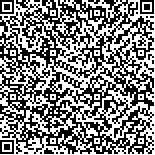下载中心
优秀审稿专家
优秀论文
相关链接
摘要

通过对肇庆试验区1996年和1997年获取的多时相、多模式雷达卫星(RADARSAT)数据分析,从图像上直接提取地物的后向散射系数,结合实地测量水稻的生长结构参数,建立了水稻生长模型,分析了不同生长周期(从80天到120-125天)4种类型水稻的时域散射特性。利用1997年4月至7月获取的7景标准模式雷达卫星数据,对试验区内三个县和两个行政区共5000km^2面积范围内的作物进行分类和水稻产量预估算,水稻类型分类及面积量算精度达91%。结果表明:利用雷达遥感数据进行水稻种植面积量算和估产需要水稻生长期间三个时相的数据,即插秧期、抽穗期、收割前期。若能够获得多参数雷达图像,可以用插秧期和收割前期的两个时相图像来代替上述的三个时相图像同样可以达到种植面积量算和估产的效果。这一结果充分说明多时相雷达卫星数据对我国南方水稻长势监测及估产具有明显优势和潜力。
Rice monitoring and production estimation has special significance to China, as rice is the staple grain and accounts for 42% of the crop production for this country. Radar remote sensing is appropriate for monitoring rice as cultivated areas are most often cloudy and rainy. SAR is anticipated to be the dominant remote sensing data source with high resolution in tropic and sub_tropical regions. It also provides re_visit schedules suitable for agricultural monitoring. This paper presents the results of a study examining the backscatter behavior of rice as a function of time using multi_temporal RADARSAT data set acquired in 1996 and 1997. A rice_type distribution map was produced, showing 4 types of rice with different life spans ranging from 80 days, to 120_125 days. The life span of a rice crop has significant impact on yield, as well as the taste and quality of the rice. The rice production of three counties and two administrative regions, totaling 5000 square kilometers, are estimated in this study. The accuracy was found to be 91%, providing confidence that multi_temporal RADARSAT data is capable of rice monitoring and production estimation. Based on the studies carried out in the Zhaoqing test site since 1993, it is suggested that rice production estimations require three radar data acquisitions taken at 3 stages of crop growth season. That is at the end of the seedling development period, in the ear differentiation period, and at the beginning of the harvest period. Alternatively, if multi_parameter radar data is available, data acquisitions may reduce to only two. That is at the end of the seedling period, and at the beginning of the harvest period. This paper also proposes a pilot scenario for operational rice monitoring and production estimation.

